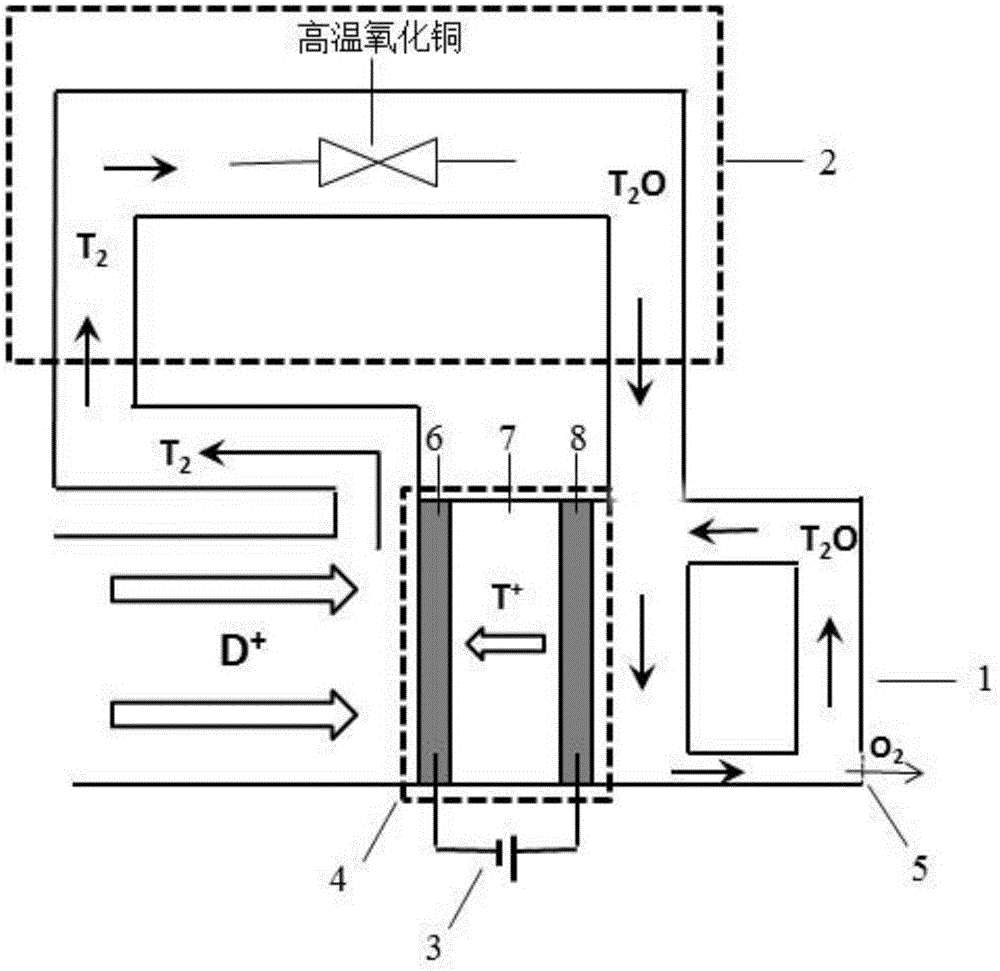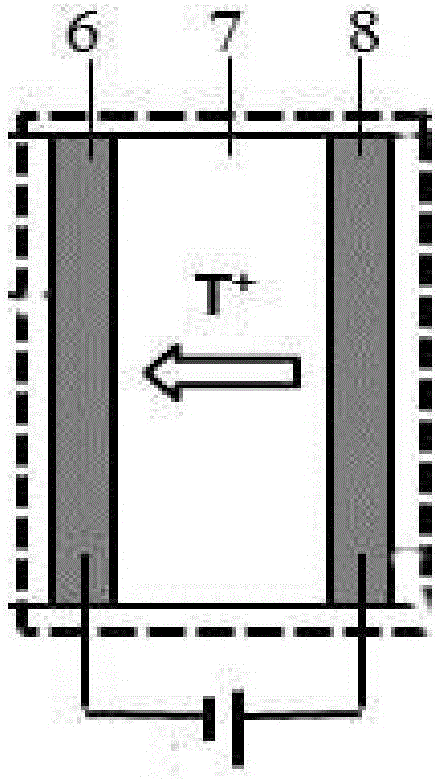Self-circulating Tritium Target System Based on Proton Conductor Ceramic Membrane
A proton conductor and ceramic membrane technology, applied in the field of self-circulating tritium target system, can solve the problems of unavailability, difficult gaseous tritium, protection, etc., and achieve the effect of improving the utilization rate
- Summary
- Abstract
- Description
- Claims
- Application Information
AI Technical Summary
Problems solved by technology
Method used
Image
Examples
Embodiment Construction
[0022] Below in conjunction with accompanying drawing, the present invention will be further described.
[0023] Such as figure 1 ,and figure 2 As shown, a self-circulating tritium target system based on a proton conductor ceramic membrane of the present invention includes a tritium water supply system 1, a tritium recovery and purification system 2, an external power supply 3, a tritium water ionization system, and a tritium ion conduction system 4; wherein, the tritium water The ionization and tritium ion conduction system 4 is in the vacuum chamber, the tritium water ionization and tritium ion conduction system 4 includes a cathode 6, a proton conductor electrolyte 7 and an anode 8, and the proton conductor electrolyte 7 is between the cathode 6 and the anode 8; The positive and negative poles are respectively connected to the anode 8 and the cathode 6 of the tritium water ionization and tritium ion conduction system 4; the tritium water supply system 1 and the tritium re...
PUM
| Property | Measurement | Unit |
|---|---|---|
| decomposition temperature | aaaaa | aaaaa |
Abstract
Description
Claims
Application Information
 Login to View More
Login to View More - R&D
- Intellectual Property
- Life Sciences
- Materials
- Tech Scout
- Unparalleled Data Quality
- Higher Quality Content
- 60% Fewer Hallucinations
Browse by: Latest US Patents, China's latest patents, Technical Efficacy Thesaurus, Application Domain, Technology Topic, Popular Technical Reports.
© 2025 PatSnap. All rights reserved.Legal|Privacy policy|Modern Slavery Act Transparency Statement|Sitemap|About US| Contact US: help@patsnap.com


